..and 16 hours on from Nasca, CUSCO...
..the heart of the once mighty Inca Empire sits at 3,300m and is a melting pot of centuries old Andean tradition, modern Peruvian life and fat American tourists. It's the continent's oldest continuously inhabited city where massive Inca-built walls line steep, narrow cobblestone streets and plazas. Legends tell that in the 12th century the first Inca, Manco Capac, was ordered by the sun god to find the navel of the Earth (qosq'o) A subsequent Inca, Pachacutec, devised Cusco's famous puma shape. Francisco Pizarro, the Spanish conquistador, marched on Cusco in 1533 heralding the end of the Inca Empire in Cusco.
Our time in Cusco was divided between pre and post-Inca Trail to Machu Picchu (see next entry!) We arrived a few days before we started the trek to acclimatise and thought that a trip out to the Valle Sagrado (Sacred Valley) on our first full day in Cusco would be a good idea.
Our first stop was Pisac, a bustling colonial village, at the base of a spectacular Inca fortress perched on a mountain spur
. We took a very steep 4km footpath that seemed to ascend 3km but enjoyed spectacular views of terraces before finally arriving at the ceremonial centre - good training indeed!
Took un colectivo via Urubamba to Ollantaytambo. Its massive fortress stands over the tiny cobblestoned village as the tourists swarm over the ruins. More spectacular steep terraces mark one of the few places the Spanish lost a major battle.
Spent a day soaking up the plentiful city sights including a walk downtown to climb the imposing monument of Pachacutec for sweeping views across the city. The Plaza de Armas is surrounded by colonial arcades and dominated by the cathedral which the Spanish erected using blocks from nearby Saqsaywaman. Inca walls line the alleyways leading off from the plaza including Hatunrumiyoc, a street which features an excellently fitted 12-sided stone in one of the walls. It is interesting to compare the colonial buildings with the Inca walls which have withstood Cusco's historic earthquakes far better over time
.
Post-trek activities included a mini downhill trek to see the Inca sights of Saqsaywaman, Q'enqo, Pukapukara and the ceremonial baths of Tambomachay as well as watching a traditional dance show and spending time on the toilet! The most impressive of these sights was Saqsaywaman (meaning 'satisfied falcon') or more memorably 'sexy woman.' Unfortunately mostly torn down by the Spanish after the fierce Inca defeat of 1536 where the thousands of dead attracted swarms of Andean condors, memorialised by the inclusion of eight condors in Cusco's coat of arms. In the puma shape of Cusco, Saqsaywaman is the head with its 22 zig-zag walls forming the teeth.
Culinary highlights included alpaca steak and some home comfort nourishment whilst in a fragile state at Jack's café where we witnessed a ferocious storm before our onward journey which departed from a pitch-black, intimidating bus station.
Onward overnight bus journey to Arequipa, 11 hours.
Inca-ing it up...
Thursday, October 17, 2013
 Cusco, Peru
Cusco, Peru
Other Entries
-
1Bienvenido a Quito
Sep 3017 days prior Quito, Ecuadorphoto_camera7videocam 0comment 0
Quito, Ecuadorphoto_camera7videocam 0comment 0 -
2Banos, the city with a lot of (hot) water
Oct 0314 days prior Baños, Ecuadorphoto_camera4videocam 0comment 0
Baños, Ecuadorphoto_camera4videocam 0comment 0 -
3The colonial jewel of the south...
Oct 0512 days prior Cuenca, Ecuadorphoto_camera6videocam 0comment 1
Cuenca, Ecuadorphoto_camera6videocam 0comment 1 -
4Arriving in Peru with a bang!
Oct 0710 days prior Mancora, Peruphoto_camera6videocam 0comment 0
Mancora, Peruphoto_camera6videocam 0comment 0 -
5Mud walls and hairless dogs...
Oct 098 days prior Trujillo, Peruphoto_camera8videocam 0comment 0
Trujillo, Peruphoto_camera8videocam 0comment 0 -
6Living Lima...
Oct 116 days prior Lima, Peruphoto_camera10videocam 0comment 0
Lima, Peruphoto_camera10videocam 0comment 0 -
7A couple of nights on the Sours...
Oct 134 days prior Pisco, Peruphoto_camera12videocam 0comment 0
Pisco, Peruphoto_camera12videocam 0comment 0 -
8Mysteries in the sand...
Oct 152 days prior Nasca, Peruphoto_camera11videocam 0comment 0
Nasca, Peruphoto_camera11videocam 0comment 0 -
9Inca-ing it up...
Oct 17 Cusco, Peruphoto_camera15videocam 0comment 1
Cusco, Peruphoto_camera15videocam 0comment 1 -
10The Inca Trail to Machu Picchu...
Oct 203 days later Machu Picchu, Peruphoto_camera16videocam 0comment 0
Machu Picchu, Peruphoto_camera16videocam 0comment 0 -
11El Cañón del Colca
Oct 2710 days later Arequipa, Peruphoto_camera15videocam 0comment 0
Arequipa, Peruphoto_camera15videocam 0comment 0 -
12The wonders of the totora reed...
Oct 3013 days later Puno, Peruphoto_camera13videocam 0comment 0
Puno, Peruphoto_camera13videocam 0comment 0 -
13Ahora aprendemos espanol...
Nov 0317 days later Sucre, Boliviaphoto_camera22videocam 0comment 0
Sucre, Boliviaphoto_camera22videocam 0comment 0 -
14Bolivia's salty jewel...
Nov 2539 days later Uyuni, Boliviaphoto_camera25videocam 0comment 1
Uyuni, Boliviaphoto_camera25videocam 0comment 1 -
15Being like Butch Cassidy...
Nov 2943 days later Tupiza, Boliviaphoto_camera13videocam 0comment 0
Tupiza, Boliviaphoto_camera13videocam 0comment 0 -
16Tarabuco Market
Dec 0145 days later Sucre, Boliviaphoto_camera12videocam 0comment 0
Sucre, Boliviaphoto_camera12videocam 0comment 0 -
17El Cerro Rico
Dec 1256 days later Potosi, Boliviaphoto_camera14videocam 0comment 0
Potosi, Boliviaphoto_camera14videocam 0comment 0 -
18Club Universitario v Nacional Potosi
Dec 1559 days later Sucre, Boliviaphoto_camera5videocam 0comment 0
Sucre, Boliviaphoto_camera5videocam 0comment 0 -
19The home of 'fine' Bolivian wine...
Dec 2064 days later Tarija, Boliviaphoto_camera15videocam 0comment 1
Tarija, Boliviaphoto_camera15videocam 0comment 1 -
20Feliz Navidad!
Dec 2468 days later Sucre, Boliviaphoto_camera7videocam 0comment 0
Sucre, Boliviaphoto_camera7videocam 0comment 0 -
21La Paz, 'The City of 3 Ps...'
Dec 2670 days later La Paz, Boliviaphoto_camera19videocam 0comment 0
La Paz, Boliviaphoto_camera19videocam 0comment 0 -
22A belated white Christmas...
Dec 2872 days later Condoriri, Boliviaphoto_camera15videocam 0comment 1
Condoriri, Boliviaphoto_camera15videocam 0comment 1 -
23Isla del Sol
Jan 0277 days later Copacabana, Boliviaphoto_camera16videocam 0comment 0
Copacabana, Boliviaphoto_camera16videocam 0comment 0 -
24The World's Most Dangerous Road
Jan 0782 days later Coroico, Boliviaphoto_camera10videocam 0comment 0
Coroico, Boliviaphoto_camera10videocam 0comment 0 -
25La Ciudad Blanca...
Jan 1287 days later Sucre, Boliviaphoto_camera13videocam 0comment 0
Sucre, Boliviaphoto_camera13videocam 0comment 0 -
26Busy, buzzy Cochabamba...
Jan 31106 days later Cochabamba, Boliviaphoto_camera5videocam 0comment 0
Cochabamba, Boliviaphoto_camera5videocam 0comment 0 -
27¡Adiós Sucre!
Feb 02108 days later Sucre, Boliviaphoto_camera6videocam 0comment 1
Sucre, Boliviaphoto_camera6videocam 0comment 1

 Cusco, Peru
Cusco, Peru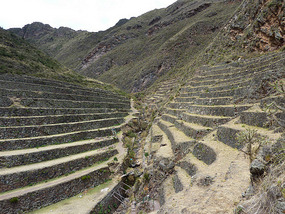
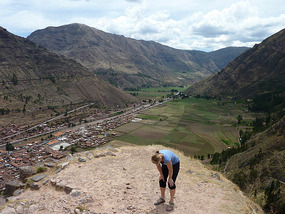





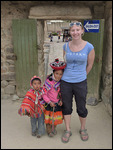

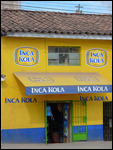
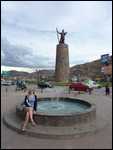
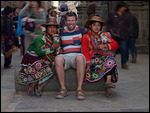
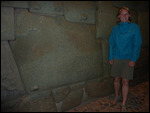
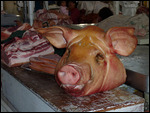
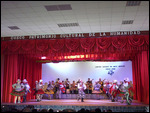
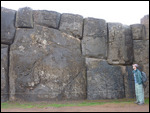

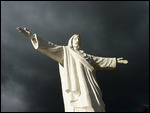
2025-05-23